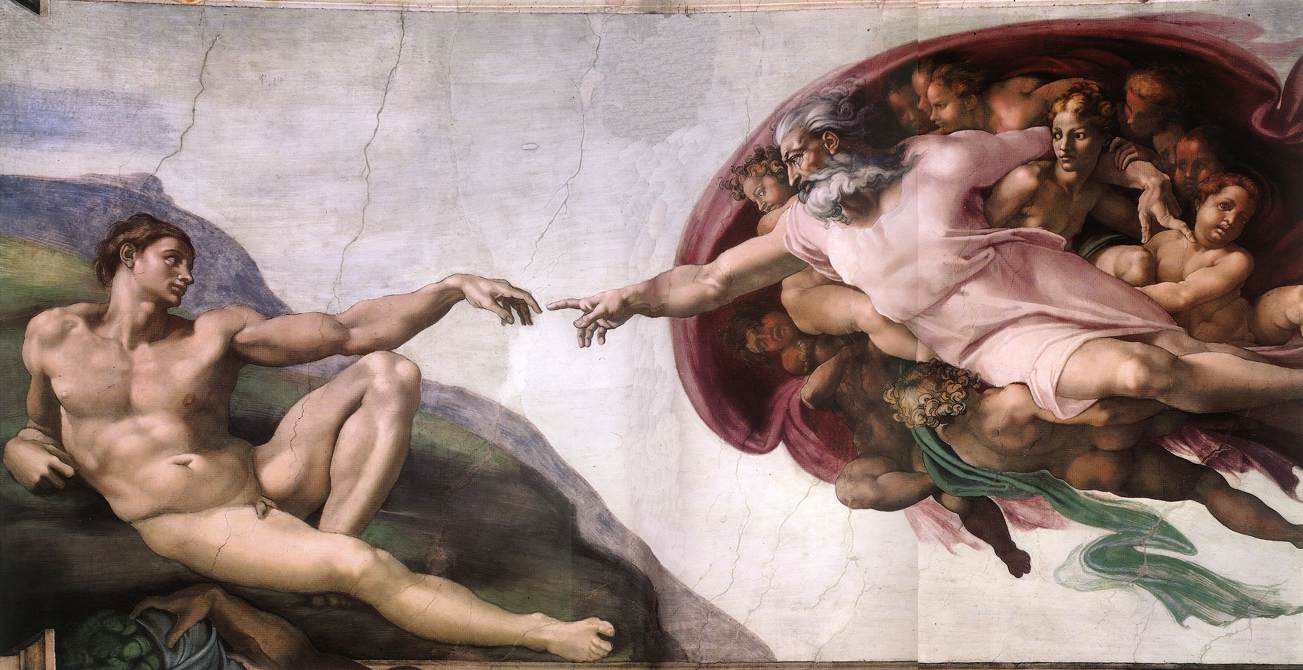The Renaissance
represents a cultural rebirth from the 14th through the middle of the 17th
centuries. Early Renaissance, mostly in Italy ,
bridges the art period during the fifteenth century, between the Middle Ages
and the High Renaissance in Italy Northern
Europe later, in 16th century.
One of the
distinguishing features of Renaissance art was its development of highly
realistic linear perspective. Giotto di Bondone (1267–1337) is credited with
first treating a painting as a window into space, but it was not until the
demonstrations of architect Filippo Brunelleschi (1377–1446) and the subsequent
writings of Leon Battista Alberti (1404–1472) that perspective was formalized
as an artistic technique. The development of perspective was part of a wider
trend towards realism in the arts. To that end, painters also developed other
techniques, studying light, shadow, and, famously in the case of Leonardo da
Vinci, human anatomy. Underlying these changes in artistic method, was a
renewed desire to depict the beauty of nature, and to unravel the axioms of aesthetics,
with the works of Leonardo, Michelangelo and Raphael representing artistic
pinnacles that were to be much imitated by other artists. Other notable artists
include Sandro Botticelli, working for the Medici in Florence ,
Donatello another Florentine and Titian in Venice
Concurrently, in
the Netherlands, a particularly vibrant artistic culture developed, the work of
Hugo van der Goes and Jan van Eyck having particular influence on the
development of painting in Italy, both technically with the introduction of oil
paint and canvas, and stylistically in terms of naturalism in representation.
Later, the work of Pieter Brueghel the Elder would inspire artists to depict
themes of everyday life.
In architecture, Filippo
Brunelleschi was foremost in studying the remains of ancient classical
buildings, and with rediscovered knowledge from the 1st-century writer Vitruvius
and the flourishing discipline of mathematics, formulated the Renaissance style
which emulated and improved on classical forms. Brunelleschi's major feat of
engineering was the building of the dome of Florence Cathedral. The first
building to demonstrate this is claimed to be the church
of St. Andrew built by Alberti in Mantua
 The Roman orders
types of columns are used: Tuscan, Doric, Ionic, Corinthian and Composite.
These can either be structural, supporting an arcade or architrave, or purely
decorative, set against a wall in the form of pilasters. During the
Renaissance, architects aimed to use columns, pilasters, and entablatures as an
integrated system. One of the first buildings to use pilasters as an integrated
system was in the Old Sacristy (1421–1440) by Filippo Brunelleschi.
The Roman orders
types of columns are used: Tuscan, Doric, Ionic, Corinthian and Composite.
These can either be structural, supporting an arcade or architrave, or purely
decorative, set against a wall in the form of pilasters. During the
Renaissance, architects aimed to use columns, pilasters, and entablatures as an
integrated system. One of the first buildings to use pilasters as an integrated
system was in the Old Sacristy (1421–1440) by Filippo Brunelleschi.
Arches, semi-circular
or segmental, are often used in arcades, supported on piers or columns with
capitals. There may be a section of entablature between the capital and the
springing of the arch. Alberti was one of the first to use the arch on a
monumental. Renaissance vaults do not have ribs. They are semi-circular or
segmental and on a square plan, unlike the Gothic vault which is frequently
rectangular.
The Renaissance
artists were not pagans although they admired antiquity and they also kept some
ideas and symbols of the medieval past. Nicola Pisano (c. 1220–c. 1278)
imitated classical forms by portraying scenes from the Bible. The Annunciation
by Nicola Pisano, from the Baptistry at Pisa

No comments:
Post a Comment